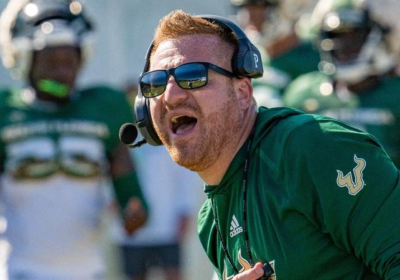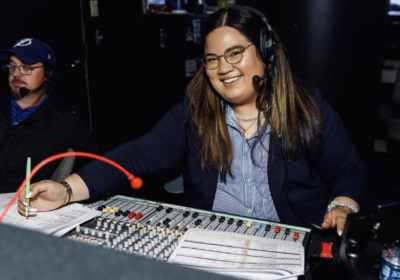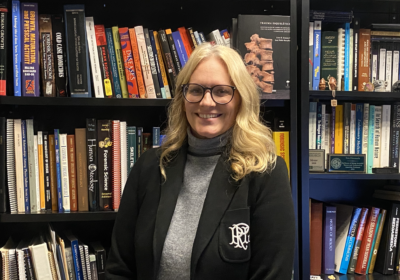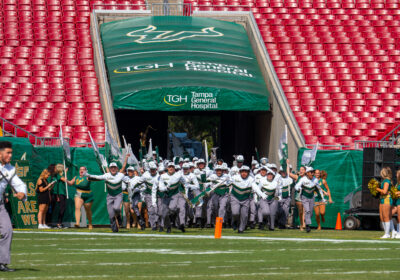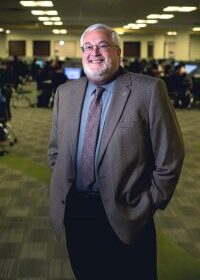Troubleshooting our relationship with nature
The subtropical wilderness of the Everglades – so quintessentially Florida – couldn’t be farther removed from the concrete jungles of New York and Philadelphia that artist Mark Dion calls home.
But Dion’s exhibition, “Troubleshooting,” has found a home at the USF Contemporary Art Museum (CAM) until March 3. The ecologically minded collection of installations, silkscreen prints, drawings and photographs has been a work-in-progress for almost 18 years. Included in the exhibit is “Herbarium,” Dion’s portfolio of seven photogravures of marine algae, which was produced at the USF Graphicstudio.
CAM curator Jane Simon said Dion’s work is a reflection on history and the changing environment.
“Landscape is a wild thing that we can encounter judiciously and not judiciously,” Simon said.
Dion’s study of William Bartram’s travelogues – which inspired him to travel extensively – as well as his understanding of natural science as it relates to history and culture are pervasive throughout “Troubleshooting.” He was particularly fascinated by the ecology of South Florida and, specifically, the Florida Everglades.
According to Dion, the title “Troubleshooting” refers to a frustration felt by the general public when artists assume they can make a difference in a community in which they do not live or work.
“I have a friend whose father is a corporate troubleshooter, and he goes to companies that are functioning very well, but there’s something that’s stopping them from reaching their potential,” he said. “But everyone in the company’s a little too close to see what that something is. Sometimes, they need an outside eye to come in and look at things a little bit differently and adjust the situation without the histories and prejudices and just tweak what’s already been working.”
While visiting the Fairchild Tropical Botanic Garden in Coral Gables, Dion saw the development and loss of wild lands happening simultaneously. He witnessed a secret society of young botanists at work.
These botanists would find out where the newest Walmart or housing development was being built and excavate the endangered plants in the area before bulldozers arrived. They would then relocate them to a more permanent environment.
This secret environmental army was the inspiration for Dion’s installation piece, “South Florida Wildlife Rescue Unit.” The piece includes two fully uniformed mannequins and a bright yellow mobile laboratory truck – stocked with actual equipment, tools and books.
Miami Art Museum curator Ren Morales, who was involved in the creation of “South Florida Wildlife Rescue Unit,” said the mobile laboratory represents the human dilemmas and anxieties that have resulted from ecological damage in Florida.
“Human attitudes of this place have evolved and changed,” he said. “They’ve oscillated from a real disdain for the Everglades, to the much more utopian attitude most of us have now towards this really special, unique ecosystem.”
Morales said that “plant politics” are constantly at play in the relationships between humans and nature.
“Different ideologies and attitudes go along with the history of human gathering,” he said. “In the 1910s in the Everglades, botanists would gather a carload of specimens out of the swamp. But you’d be more likely to see poachers gathering plants, bird feathers and animals out of the swamp. There’s a two-sided nature of humans taking things out of a natural environment.”
Shannon Buchanan, a senior majoring in studio art, said while a political and environmental conscience is at the forefront of “Troubleshooting,” the exhibit maintains characteristics of contemporary art.
“A lot of people would come here thinking it’s not art,” she said. “But when you take into account the experience he went through, it encompasses a lot more than what’s here in the gallery. Especially in contemporary art, a lot of artists take a role in society as a person who has experience and shares it with everyone else. This follows in that tradition.”
Dion said he is interested in creating a parallel between displaying natural history and art material – both of which are exhibited in museums.
“It’s interesting to think of parallels and the differences,” he said. “It’s all about the object of study. When put into a contemporary art context, the systems of display become on display, not the object of study. It invites a critical reflection on how nature is represented within any context.”
In a time of ecological crisis, Dion set out to create a visual reaction that is simultaneously creative and informative. He said that this is the basis of art making.
“It’s about making a contribution to nature in a visual way. This is a futuristic project,” he said. “It’s about imagining a culture that could exist – a culture that demonstrates a relationship to the natural world that is not about extraction or bio-degradation, but about fostering something in a very positive way.”

